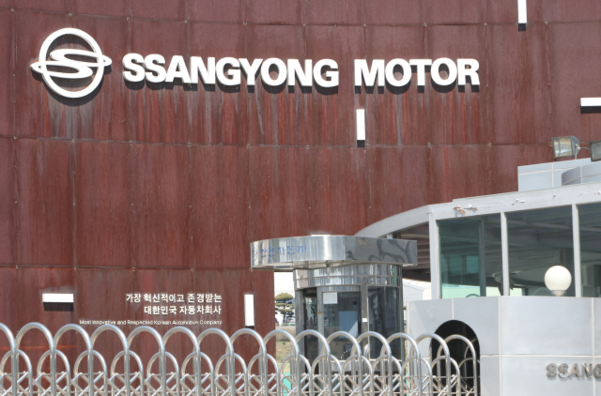Input 2020.12.29 15:00
Parts manufacturers urgently supply parts only during negotiation
The factory was recently shut down due to refusal of supply by some partners. Ssangyong Motor (003620)Decided to resume operation of the plant from the afternoon of the 29th to the end of the year. However, the delivery negotiations with partners have not been completely completed. As the negotiations were prolonged, suppliers decided to urgently provide only parts that could operate the plant during that period.
If the ongoing parts negotiations are not resolved smoothly, the factory will have to stop again. Ssangyong Motors, who applied for autonomous restructuring support (ARS) during the rehabilitation process, has to operate the factory as soon as possible to show the possibility of normalization of business, but if the production disruption prolonged due to the refusal of suppliers, will the Ssangyong Motor crisis in 2009 be reproduced? There are also concerns.

Hyundai Mobis and S&T Heavy Industries, which initially refused to supply parts, resumed supply, but LG Hausys, which supplies bumpers, Borg Warner Ochang, which supplies T/C assemblies, and Continental Automotive, which is in charge of combimeters, are still hesitant to resume supply. . Some mid-sized suppliers are also refusing to deliver, so there is a continuing risk of supply and demand for parts to restart the plant. The production of lines 1 and 3 of the Pyeongtaek plant is about 650 units a day, and it was estimated that the accumulated production loss of about 1300 units occurred due to the closure of the previous two days.
Partners are concerned that Ssangyong Motor will have a problem with recovering funds if it enters court management in the future, and is demanding that the delivery price be paid in cash first. In the case of Ssangyong Motor, which occurred due to a large-scale liquidity crisis in 2009, there was a precedent of failure to recover funds, so it is explained that it is the minimum safeguard before entering additional supply.
However, Ssangyong’s liquidity situation is serious. As of the 22nd, Ssangyong Motor’s loan principal and interest amounting to KRW 255.4 billion was overdue. The loan principal is 255 billion won and interest is 275.74 million won. Based on the loan principal, the Korea Development Bank of 90 billion won and the Woori Bank of 7.5 billion won are overdue. JPMorgan’s 40 billion won, Woori Bank 17.5 billion won, and Korea Development Bank 100 billion won lost profits due to corporate rehabilitation applications. Loss of profit over time is a procedure in which loans are recovered before maturity when the debtor’s credit risk increases.

If Ssangyong Motor’s unsuccessful supply negotiations make it difficult to operate the plant, parts makers are also concerned about the risk of domino bankruptcy. Ssangyong Motor has 219 suppliers, with a delivery amount of 1.8 trillion won. This is equivalent to 12.4% of all auto parts makers in Korea. In addition, the total number of subcontractors is about 1300, including 250 primary suppliers and secondary and tertiary suppliers. This is why there are concerns that Ssangyong Motor’s filing for rehabilitation procedures with the court again may lead to layoffs that it suffered in 2009 and bankruptcy of partners.
Ssangyong Motor’s position is to conclude the negotiations for parts supply with partner companies as positively as possible so that the entire factory can operate normally as early as today. An official from Ssangyong Motor said, “The negotiations related to the supply of parts will be completed by the morning of this day, and whether the entire operation will be decided in the afternoon,” he said. “Please keep an eye on the situation because the previously negative partners are turning back to cooperate.”
